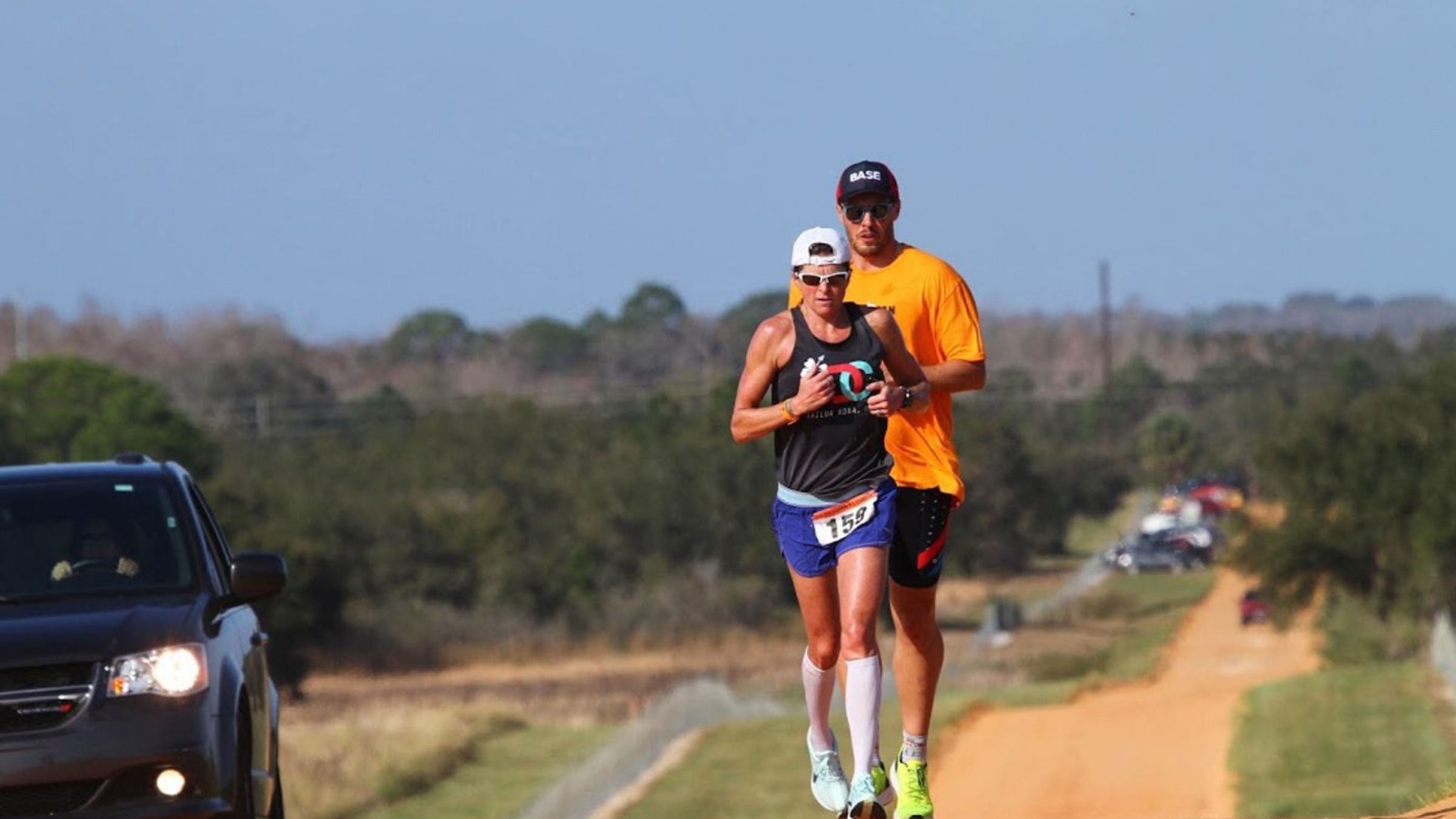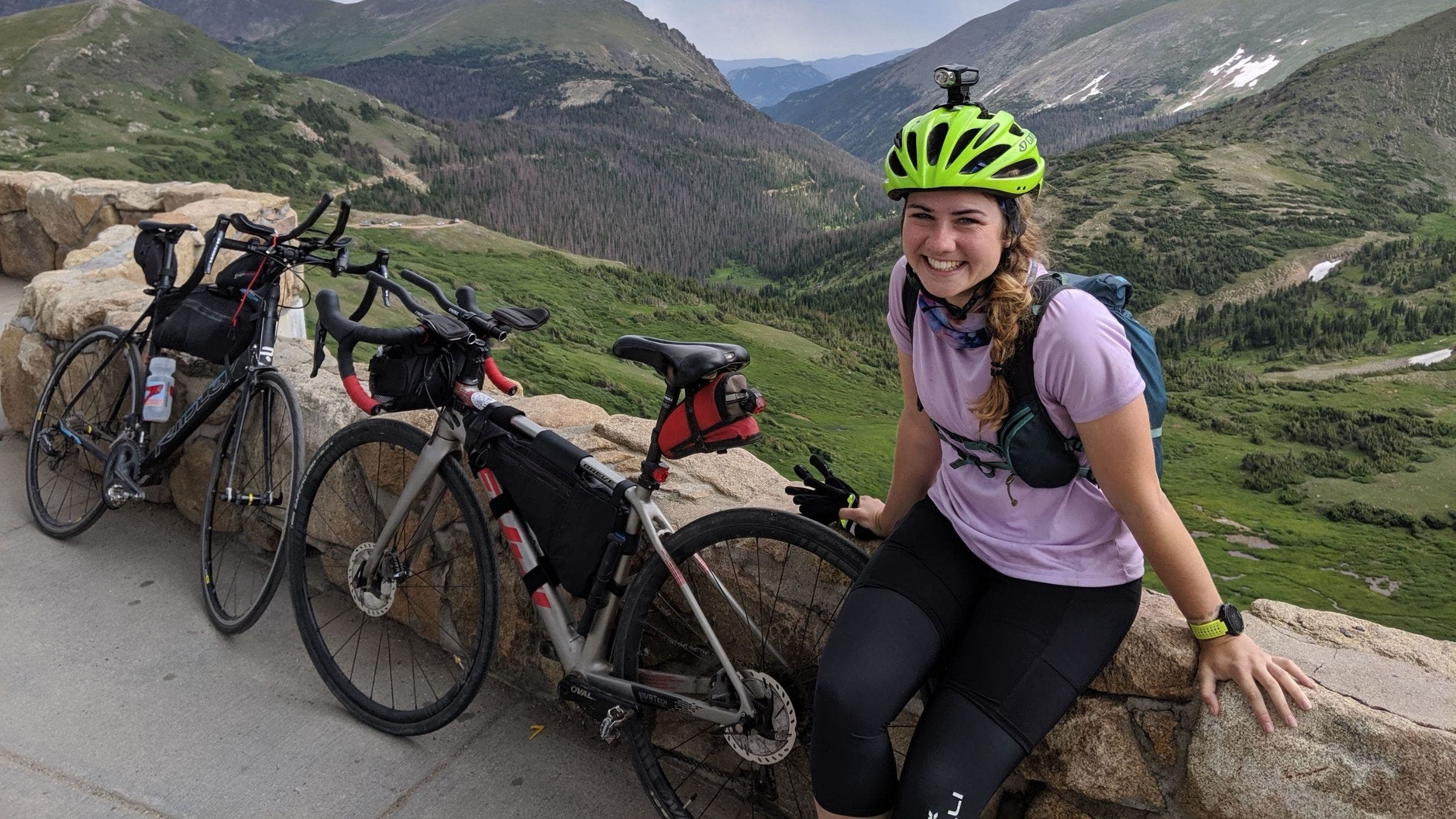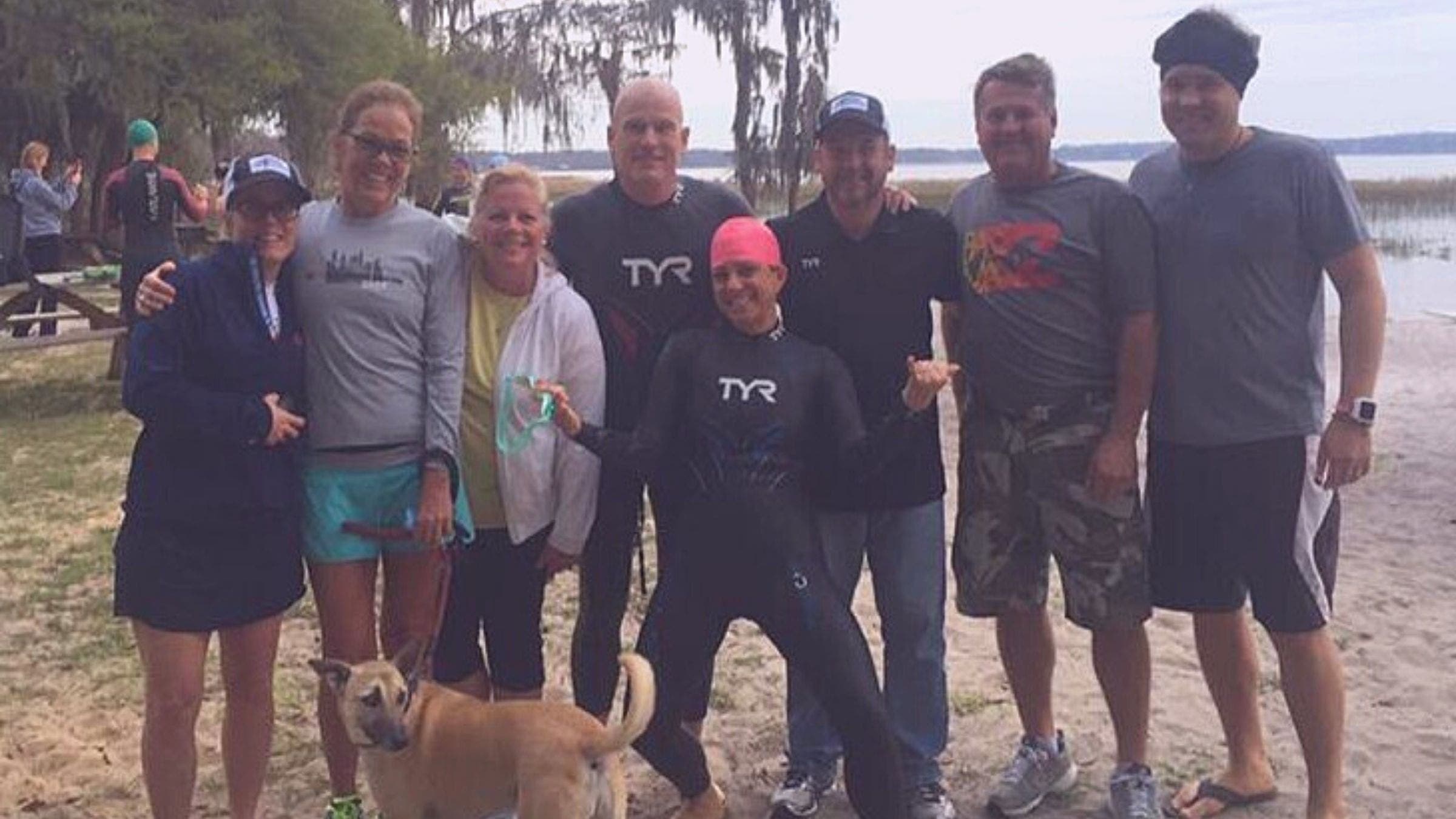Your Ultimate Guide to Ultra Triathlon

(Photo: Courtesy of Dede Griesbauer)
Ultra Tri 101
Does the thought of two days of continuous swim-bike-run sound appealing to you? How about five days, or better yet, ten or twenty? Ultra-distance triathlon, or races beyond the 140.6 miles of an iron-distance event, are growing in popularity as athletes find new and creative ways to put their endurance to the test. If the idea of racing for hundreds of miles over multiple days sounds a bit extreme, that’s because it is. Unlike your local sprint triathlon, ultra-distance races aren’t the type of events to enter on a whim.
Racing an ultra triathlon requires the athlete to adopt a different mindset and strategy to make it through back-to-back days of swim, bike, and run. Think of how you typically feel the day after a race of any distance: probably tired, sore, hungry, and dehydrated. Now imagine having to do your race all over again that day, and the next (and the next). Even Dede Greisbauer, a veteran triathlete, struggled during her world-record Ultraman win in 2020, famously snapping at her crew during the final stretch of the double marathon: “10 kilometers? Do you have any idea how [expletive] far that is?”
Looking for tips on how to prepare for an ultra triathlon? We tapped Maria Simone, winner of the 2015 and 2016 Florida Double Anvil (4.8-mile swim, 224-mile bike, and 52.4-mile run), and Laura Knoblach, who holds the women’s world record for the Double Deca Continuous (48-mile swim, 2,240-mile bike, and 524-mile run—no that’s not a typo) for their insights.

What is an ultra triathlon?
Technically, an ultra triathlon is anything longer than an Ironman. But that definition might be a little too simple. Ultra triathlon takes a lot of different forms. Some of the most common:
| Multi-Stage Triathlons | These are multiple races of varying lengths over the course of several days. For example, the American Triple-T Challenge is four races over three days: a sprint on day one, back-to-back Olympic races on day two, and a half-Iron distance on day three. |
| Anvil | This is USA Ultra Triathlon’s term for multiples of iron-distance races. A double anvil is the equivalent of two Iron-distance races, or a total of 281.2 miles; triple anvil is 421.8 miles total; quintuple is 703 miles. In these events, the swim is performed consecutively (so a triple anvil would be a 7.2-mile swim, followed by a 336 mile-bike and 78.6-mile run). |
| Ultraman | A three-day, 515-kilometer (320-mile) multisport race consisting of three stages: a 6.2-mile swim and 90-mile bike on day one, 171.4-mile bike on day two, and a 52.4-mile run on day three. |
| Deca | One Iron-distance triathlon completed every day for ten days in a row. |
| Deca Continuous | Ten iron-distance events completed consecutively, with a 24-mile swim followed by a 1,120 mile bike ride, then a 262-mile run. A Double Deca is twice the distance. |
How many hours per week do you train for an ultra triathlon?
If Ironman training consumes a significant chunk of an athlete’s schedule, than surely an ultra-distance triathlon must be a full-time job, right? Not quite, said Knoblach:
“To be honest, ultra training is more relaxed in some ways, and more time-consuming in others,” she said. “If you skimp on training for an Olympic distance, you might still finish, just not as fast as you’d hoped. If you skimp on training for an ultra, there’s a very real chance you might not finish at all, or develop a health condition during the race.”
The biggest difference between Ironman and ultra triathlon training is not the volume of training, but the focus. Swim, bike, and run workouts are critical for both races, but ultra triathlon training has an added emphasis on durability.
“If you’ve completed a half or full Iron-distance triathlon, it is not likely that cardiovascular fitness will be your limiter,” Simone said. “But muscular durability and endurance can be. Thirty-six-plus hours for the continuous iron-distance races, and two-plus days for the stage races is a lot of work on your body.”
The hours spent in dedicated swim, bike, and run workouts might not differ much from an Ironman training plan, but the duration of your peak (or highest-volume weeks of training) will be longer. There will also be more time spent in “unofficial” training—that is, standing when you’d normally be sitting, or walking when you’d normally take the subway. When it comes to training for an ultra triathlon, the more movement in your day, the better.
RELATED: 27 Hours Per Week, Done by 6 A.M.: How Does Ultraman Steve Keller Do It?
What are the key workouts for an Ultraman or Anvil triathlon?
The specifics of an ultra-distance training plan will depend on the athlete’s individual history, strengths, weaknesses, and goals, but generally, preparing for an ultra distance triathlon will have back-to-back days with long workouts. For example, you might see two days of long bike rides, or a long ride on Saturday followed by a long run Sunday. Again, this is to build durability. It also serves as a way for an athlete to learn pacing—how hard can one push it on the first day while still staying fresh for the second?—as well as experiment with strategies to expedite recovery between stages.
Another critical element of ultra triathlon training: knowing how to perform around the clock. “For continuous ultras, prepare for riding and possibly running at night,” Simone said. This can complicate training, as sleep is an essential part of recovery. Instead of waking up in the middle of the night to train, Simone recommends starting a long ride or run later in the afternoon, then finishing it into the nighttime hours. (Pick safe, well-lit roads, and always use safety lights and reflective gear on your bike and body.)
What do you eat during an ultra distance triathlon?
One can only live on gels and bars for so long, so what do you eat when you’re racing an Ultraman or Anvil? Pretty much the same thing you’d eat off the course.
“You want to practice eating real food,” Simone said. “It’s very hard to do these types of events on engineered sport nutrition alone. It may be easier for stage races, when you stop at the end of the day and have a meal, but, as the race goes on, real food is clutch.”
Athletes can expect to burn through 5,000 to 7,000 calories a day from racing alone, which is almost impossible to replace in real time. Instead, athletes should experiment with various food sources and train their gut to absorb more calories and carbohydrates on the run.
RELATED: How to Use Real Foods to Fuel Before, During and After Training
What gear do I need for an ultra distance triathlon?
Your packing list for an Ultraman or multi-stage triathlon will be similar to the packing list for an Ironman. You’ll just need greater quantities. This is as true for the obvious (like nutrition) as it is for the not-so-obvious (like shoes and bike shorts). Read the course overview carefully to get a sense of what you will need. If you can find race reports, use them to tailor your list, or ask the race director if there is any mandatory and/or recommended gear for your ultra triathlon event.
Knoblach says that though some people wear the same clothes and gear multiple days in a row while racing, most opt to change into fresh gear at least daily, if not multiple times during the day. Keeping tabs on all this gear can be overwhelming, especially when dealing with the fatigue of racing many hours over multiple days, so organization is key.
“I once lost my wetsuit and swim sleeves in the back of a pickup truck seven days into a race. It’s a bummer to lose time looking for things,” Knoblach said. “Staying organized and asking your crew to stay organized is probably the best thing you can do for yourself.”
Simone recommends storing gear in a plastic tub (like the type you might use for holiday decorations) or a portable drawer organizer. “This makes it easy to port for your crew, or for you to access if you are self-crewed. It also keeps your stuff dry when it rains or gets dewy in the mornings. To keep things simple, use clear bags to pack like things with like things—so one bag for socks, one for bike shorts, one for shirts.”

What is an ultra triathlon crew? How do you crew for a triathlete?
Some races allow (and in some cases, even require) athletes to have one or more people providing direct support, also known as “crewing.” Crew members are people who carry extra clothes and food, meet athletes at checkpoints throughout the races to ensure they are eating and drinking enough, and offer words of encouragement.
“A crew is so crucial!” Knoblach said. “There are many races that I couldn’t have finished without mine.”
Racing style, nutrition, and race schedule are all so particular to each athlete and event, and crew members may not be athletes themselves, so they might not always know what you need (and when you’ll need it). Before the race, consider putting together a small binder of things to know or having a checkpoint rehearsal with your crew for everyone to run through how they can best support you during the race. Crews should know how to communicate effectively with their athlete, especially when things are getting tough.
“Crews should never ask how the athlete is feeling,” Simone said. “This creates an opportunity to complain. Instead, just ask: ‘What do you need?'”
Additionally, crews should keep track of how much fuel and hydration the athlete consumes by counting the calories from the empty wrappers an athlete unloads at each checkpoint. “Race brain” is a real thing—with accumulated miles, an athlete will lose track of what they’ve been eating and drinking. By keeping a log of what an athlete has (and hasn’t) been consuming, a crew can address deficits in fuel or hydration early on.
Crewing isn’t always fun. It’s a lot of waiting around at all hours of the day and night for athletes to come through checkpoints, which can be both tedious and stressful. Keep this in mind when selecting your crew members, and take care of them as much as they take care of you. “In my opinion, the mental health of your crew is more important than yours,” Knoblach said. “I always tell mine that somebody has to have their head on straight in this, and it won’t be me—so if you need to take an afternoon off to rest, please do so.”
How do ultra triathletes recover quickly for the next day of racing?
Ultra distance triathlon winners aren’t always the fastest athletes; they’re the ones who recover most efficiently. “Being able to get up and get back to it after some sleep is important,” Simone said.
Recovery begins well before the day’s racing ends. “During the last couple miles of your day, focus on taking in a lot of calories,” Knoblach said. This will jump-start the recovery process. As soon as you’re done for the day, consume a liquid recovery beverage (like a protein shake), drink lots of water for recovery, and eat a substantial, real-food meal within two hours. If you don’t go to bed immediately after this meal, then drink a high-protein, high-calorie beverage before going to bed, too.
Sleep is the most important recovery tool. How much you’ll get depends on the type of racing you’re doing. Some races, like Ultraman or some Deca races, have set distances and cutoff times each day, which allows athletes to begin recovering as soon as they finish their leg for the day. Others, like the Deca Continuous, run 24 hours/day, with athletes choosing when (or if) they’ll sleep during the race. Whether your sleep strategy is to cat nap at checkpoints or to get a solid block of zzz’s, it’s critical to maximize your time spent sleeping by getting as comfortable as possible, elevating the legs to increase circulation, and asking your crew to wake you up at a certain time (knowing someone else is responsible for this will give you one less thing to worry about).
What are some mental strategies for racing ultra triathlon?
“Expect it to hurt, but I’ve found these events don’t hurt worse than a full Ironman,” Simone said. “You just have to tolerate the discomfort for a longer period of time. Make sure your training gives you an opportunity to work through the mental fitness side of this.”
A multi-day race can throw a lot at you, from fatigue and boredom to pain and bad weather. Use your workouts to cultivate the mental skills (like self-talk) you’ll need to get through each of these scenarios. Flexing your mental muscles during training means it will come naturally during a race—when you really need it.
The right mindset for ultra triathlon can be built outside of training as well. “My biggest training tip is to cultivate your character,” Knoblach said. “Work on helping others, doing the dishes, mowing the lawn, treating others with respect, even when you are tired—and especially when you are most tired.” By doing this, Knoblach says you’ll quickly learn what personal flaws you have when you are under pressure, exhausted, or stressed. Ultra triathlon can bring out the best in people, but it can also bring out the worst. Knowing what you’re like in those two extremes can help you to create a game plan for managing intense emotions when they appear during the race (and they will appear during the race). With the right mindset, you can quickly shift your focus back to getting through the day (and the next, and the next). Soon enough, the finish line (and a well-earned post-race nap) will be in sight.